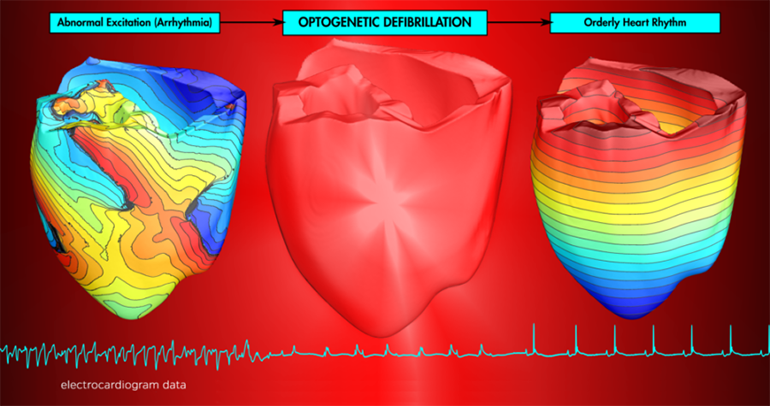
While electric cardiac defibrillators are successful life-saving devices that have been used in practice for many years now, they are extremely shocking (forgive the pun) and potentially harmful to cardiac tissue when they fire. A new approach, that of optical defibrillation, may be a lot more tender and maybe even pleasant to get an arrhythmic heart into a normal rhythm. We’ve written about early attempts to use light to successfully influence the beating of animal hearts before (see flashbacks below), but the new study from Johns Hopkins University points to this approach also working on humans.
The investigators first showed that certain light patterns are pretty good at stopping arrhythmias in mouse hearts and then performed the same, but on a computer simulation of a human heart. The simulation was based on MRI scans of a real patient with arrhythmia and assumed that a light sensitive protein was genetically introduced into the cardiac tissues.
The Hopkins team showed that unlike for mouse hearts, red light would be a lot more effective as it can penetrate a lot more tissue, but the effect of taming the arrhythmia worked about as well.
There’s still a lot of work to be done before we see optical fibers instead of electrode leads snaking inside the heart, but the latest findings are pointing to the fact that this is very possible.
Flashbacks: Light Used as Pacemaker to Set Rhythm of Beating Heart…; Virtual Heart Beats to the Rhythm of the Light…; Optogenetics Scientists Demonstrate Light Pacing of Cardiac Cells…; Infrared Laser Used to Pace a Beating In Vivo Heart…
Study in The Journal of Clinical Investigation: Optogenetic defibrillation terminates ventricular arrhythmia in mouse hearts and human simulations…



